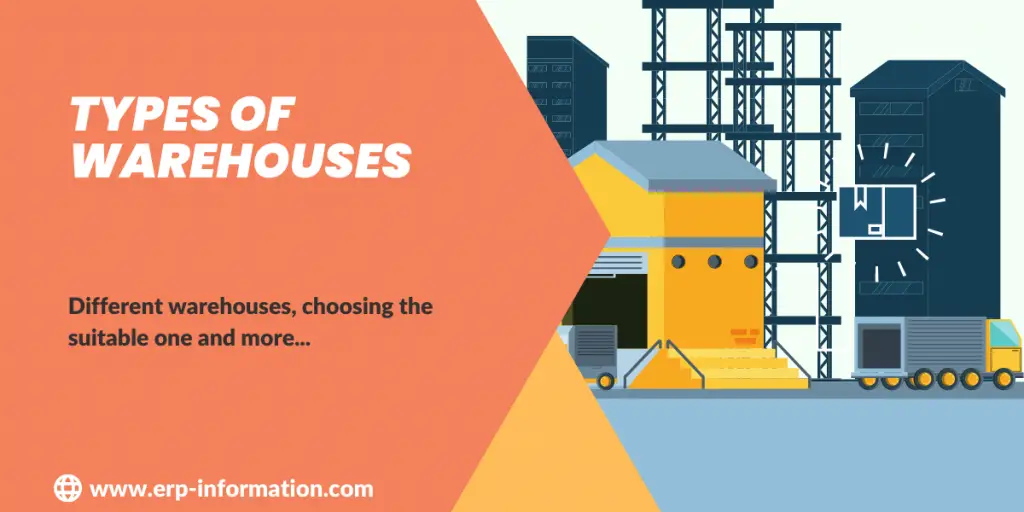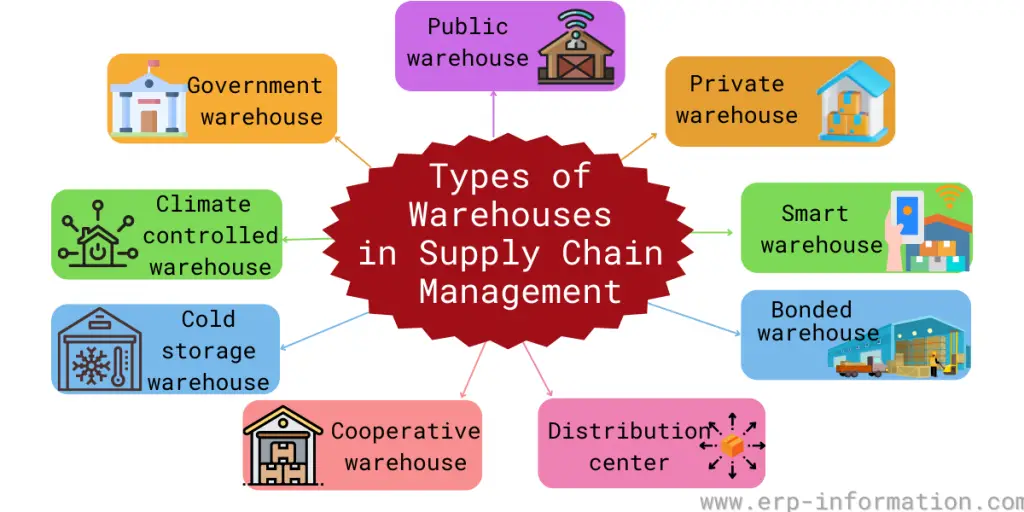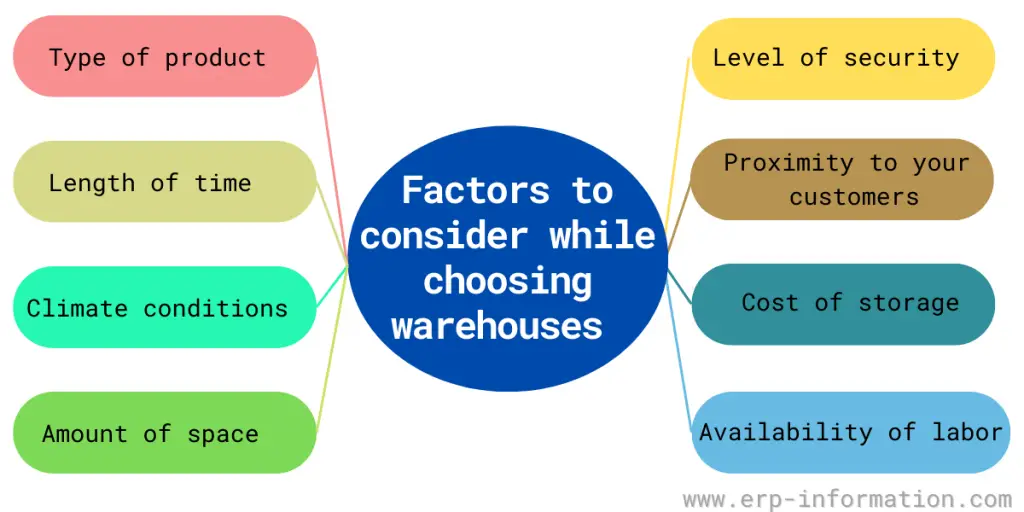Warehouses are vital to the supply chain because they store inventory and help with order fulfillment. Without them, your business would be crippled. Not knowing about your warehouse options can cost your business time and money.
This blog post is for anyone who wants to learn about the nine different types of warehouses available for businesses to decide which type of warehouse is suitable for their business.
What is a Warehouse?
Warehousing is the storing of goods until they are needed. In a supply chain, warehouses store inventory until the next stage needs it. Warehouses come in all shapes and sizes and serve different purposes within the supply chain.
Understanding the different warehouse types can help you better understand how products move from supplier to consumer.
Types of Warehouses in Supply Chain Management
There are many different types of warehouses, each with its strengths and weaknesses. The kind of warehouse you use will depend on your business needs.
Let us look into the nine most common warehouse types of supply chain management. They are,
Public Warehouse, Private Warehouse, Smart Warehouse, Bonded Warehouse, Distribution Center, Cooperative Warehouse, Cold Storage Warehouse, Climate Controlled Warehouse, and Government Warehouse.
1. Public warehouse
It is a storage area owned by governmental bodies. A person or an organization can use this warehouse-type by paying rent.
Due to their lack of technological capabilities, public warehouses tend to be very basic in the setting.
Its essential characteristics include:
- A public warehouse is most suitable for temporarily storing goods for e-commerce, startups, and small-scale industries.
- Location: It is situated in areas easily accessible by all types of transportation.
- Safety: The government ensures the safety of the stored goods by providing security guards and cameras.
- Cost: The cost of using a public warehouse is lower than that of a private one.
2. Private warehouse
It is a storage area owned privately by manufacturers, distributors, wholesale dealers, etc. Therefore, it is a little expensive compared to public warehouses.
However, it is still affordable for startups and small-scale industries.
Its essential characteristics include:
- Flexibility: The space in the warehouse can be used and arranged according to the owner’s needs.
- Customization: The owner can customize the warehouse according to their business need.
- Security: Private warehouses have high security as they are not open to the public.
3. Smart warehouse
It is an advanced type of warehouse in that you can store and manage the items automatically with the help of Artificial Intelligence.
That includes managing software and performing tasks such as picking, weighing, packing, transporting, and storing goods using drones.
So this type of warehouse makes the work easy and increases sales and productivity by decreasing human errors. Hence, prominent e-commerce vendors like Amazon and Alibaba use this warehouse type.
Its essential characteristics include:
- Automation: All the work in this warehouse is done automatically with the help of machines.
- Fast and Efficient: It is quick and efficient as machines do the work, and there is no scope for human errors.
- High security: Smart warehouses have increased safety as they are equipped with CCTV cameras and other security systems.
4. Bonded warehouse
A particular storage area is used to store imported items before paying customs duties. You can keep the imported goods for an extended period also. Such warehouses require a license from the government.
This warehouse’s most crucial advantage is that you need not pay duties until your items are released and sold because duties for imported objects will be very high.
Its essential characteristics include:
- Storing of imported goods for a short or long period.
- No need to pay duties until the items are released.
- Suitable for storing high-value and sensitive items.
5. Distribution center
It is a storage area, especially for temporary storage goods. Unlike other warehouses, distribution centers might hold materials temporarily or for a short period, with a much higher rate of incoming and outgoing products.
When many materials are received, and you might distribute them to different resellers in the supply chain, the distribution center helps a lot.
In addition to storing inventory, distribution centers also handle order fulfillment and prepare shipments, which are integral to connecting suppliers and customers.
Essential characteristics:
- It is well equipped with advanced technologies.
- It provides value-added services like pick & pack services, docking, etc.
- It is suitable for storing goods temporarily or for a short period.
6. Cooperative warehouse
A cooperative warehouse is a storage area jointly owned and operated by a group of companies or cooperative organizations such as farmers, weavers, etc. The main purpose of this type of warehouse is to save costs and increase efficiency.
In this warehouse, both members of the cooperative organization and outsiders can store their goods. However, members will get some reduction in rent.
Essential characteristics:
- In this warehouse, both members of the cooperative organization and outsiders can store their goods.
- It provides an ideal way to connect businesses with similar inventories.
- It helps companies reduce costs, share resources, reduce duplication of services, and pool buying power.
7. Cold storage warehouse
It is a storage area that stores temperature-sensitive goods such as medicines, cosmetics, food items, and beverages. This type of warehouse is specially designed to maintain a low temperature.
The main advantage of this warehouse is that it helps preserve the quality of goods for a long time. In addition, the temperature inside the cold storage warehouse is maintained using advanced cooling systems.
Its essential characteristics include:
- Shipments in and out of cold storage warehouses are also refrigerated.
- Pharmaceutical companies typically use it.
- Warehouse management needs to keep the environment cold with additional maintenance and surveillance.
8. Climate-controlled warehouse
A climate-controlled warehouse is a storage facility where the temperature and humidity are carefully regulated to protect stored items. Climate-controlled warehouses often store sensitive materials, such as pharmaceuticals, electronics, and foods.
The temperature and humidity in a climate-controlled warehouse are controlled by a system of heating, ventilation, and air conditioning (HVAC).
The HVAC system maintains the temperature within a specified range and manages the humidity level to prevent condensation from forming on items or within the building itself.
Climate-controlled warehouses typically use insulated walls and ceilings to minimize heat loss or gain. The warehouse may also have alarm systems that notify staff if the temperature or humidity levels vary.
Its essential characteristics include:
- Temperature, humidity, and ventilation need to be monitored and controlled.
- Alarm systems notify staff in case of temperature or humidity changes.
9. Government warehouse
A government warehouse is a building or complex of buildings designed to store large quantities of goods and materials on behalf of the government.
These warehouses are usually managed by a government agency or department and may be used to store anything from food and medical supplies to weapons and ammunition.
In some cases, government warehouses may also be open to the public, allowing people to purchase goods and materials directly.
Government warehouses are a better option than public ones since they typically have greater security, which is critical to certain products.
Its essential characteristics include:
- Suitable for storing large quantities of inventory.
- Allows people to purchase goods and materials directly.
- More cost-effective and provides security.
Eight Factors to Consider While Choosing a Warehouse
Many factors need to be considered while choosing a warehouse, such as:
- The type of product you are storing
- The length of time you need to store the product
- The climate conditions required for storage
- The amount of space you need
- The level of security you need
- The proximity to your customers
- The cost of storage
- The availability of labor
FAQs
What is the most popular type of warehouse?
The most popular type of warehouse is the distribution center. Distribution centers are used by many businesses to store products and materials that need to be shipped to customers.
Which warehouse is more expensive?
There is no definitive answer to this question as it depends on the specific needs of your business. For example, some warehouses, such as private warehouses, may be more expensive to rent or lease than others.
Conclusion
No one type of warehouse is perfect for every business. Instead, there are many warehouse types, each with advantages and disadvantages. Therefore, you must consider your needs to choose the right warehouse type for your business.
The most important thing is to make sure that your goods are stored safely and securely so that you can fulfill your customer’s orders on time.
References:


